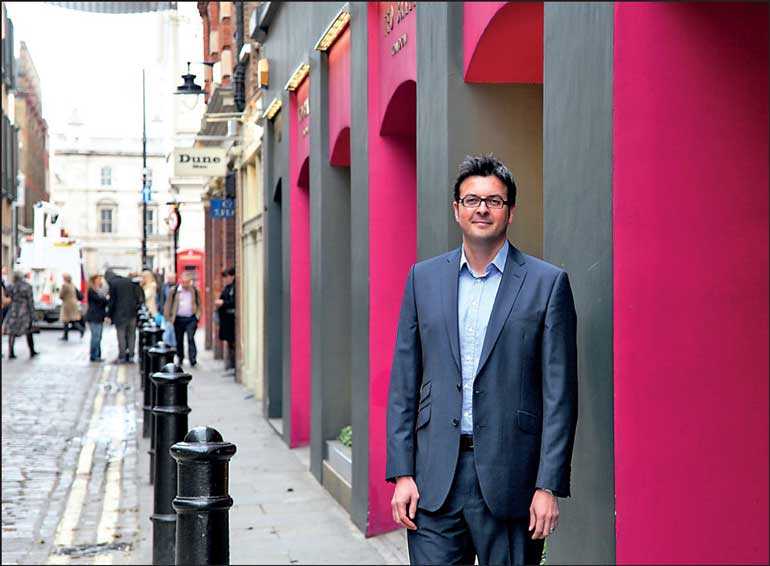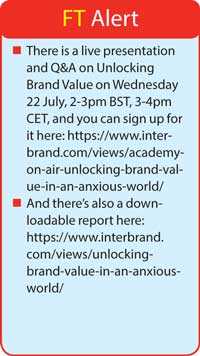Sunday Apr 20, 2025
Sunday Apr 20, 2025
Wednesday, 22 July 2020 00:00 - - {{hitsCtrl.values.hits}}

Mike Rocha
We are currently inhabiting a world in tension between fear and hope: an anxious world. The business paradigm is now one of disruption and uncertainty, so building resilience into your business model is more important than ever. What can business leaders do to unlock new sources of capital and growth in this difficult time?
According to Mike Rocha, Global Director of Brand Economics at Interbrand, they should look to one of their most important business assets – their brands – to unlock new sources of capital and growth.
For instance, one of the Interbrand’s clients, Reliance Jio of India, has recently attracted a world-leading $20bn-plus round of investments from global giants such as Google, Facebook and Intel. And that was based on the strength of its brand – designed as an ecosystem, not only a product or service, signaling that Jio was going to be a major digital platform of the future and a significant tech player.
But one major area where brand value is crucial is M&A activity – mergers and acquisitions. M&A activity driven by the current crisis is inevitable, as businesses look to reduce costs, create synergies and secure supply chains.
“When there is significant economic uncertainty” said Mike, “organizations can look to dispose of brands from within their portfolio in order to realise cash or create greater focus by rationalizing parts of a portfolio which are surplus to requirements.
“These moments represent crucial inflection points for businesses and brands, and brand strategy should be as rigorously evaluated as the business reasons behind the transaction. Maximizing the value of the deal (if you’re on the sell-side) or being clear on the strength of the brand you are acquiring (on the buy-side) is crucial.”
“A brand due diligence exercise, which can include a valuation, can help inform the transaction process, whether it is uncovering untapped potential in the brand, or hidden weaknesses.”
A merger can be particularly difficult. The risk of failure is well documented – there’s a failure rate (i.e. failure to add shareholder value) of between 50-85%. And there can be multiple causes for this: Unclear strategy; the lack of a clear plan to get to launch date; not staying close enough to current customers; underestimating cultural integration risks; and a failure to understand what equities each brand is bringing to the party.
Businessess can increase their chances of success, though, by asking three simple questions. First, what are the strengths & weaknesses of brands and cultures coming together in this deal? Second, what business case do we need to create confidence in our strategy? And third, have we set out a compelling vision for our new organisation, internally and externally?
Interbrand has run the Best Global Brands index for 20 years, and analyzed the behavior of indexed brands during the last major crisis, the financial crash of 2008-2009. The strongest brands, it found, rebounded faster and outperformed their rivals after the crisis.
In this current crisis, and its aftermath, the value locked up in its brands is an asset businesses can lean on to survive and prosper.
Discover Kapruka, the leading online shopping platform in Sri Lanka, where you can conveniently send Gifts and Flowers to your loved ones for any event including Valentine ’s Day. Explore a wide range of popular Shopping Categories on Kapruka, including Toys, Groceries, Electronics, Birthday Cakes, Fruits, Chocolates, Flower Bouquets, Clothing, Watches, Lingerie, Gift Sets and Jewellery. Also if you’re interested in selling with Kapruka, Partner Central by Kapruka is the best solution to start with. Moreover, through Kapruka Global Shop, you can also enjoy the convenience of purchasing products from renowned platforms like Amazon and eBay and have them delivered to Sri Lanka.
Discover Kapruka, the leading online shopping platform in Sri Lanka, where you can conveniently send Gifts and Flowers to your loved ones for any event including Valentine ’s Day. Explore a wide range of popular Shopping Categories on Kapruka, including Toys, Groceries, Electronics, Birthday Cakes, Fruits, Chocolates, Flower Bouquets, Clothing, Watches, Lingerie, Gift Sets and Jewellery. Also if you’re interested in selling with Kapruka, Partner Central by Kapruka is the best solution to start with. Moreover, through Kapruka Global Shop, you can also enjoy the convenience of purchasing products from renowned platforms like Amazon and eBay and have them delivered to Sri Lanka.